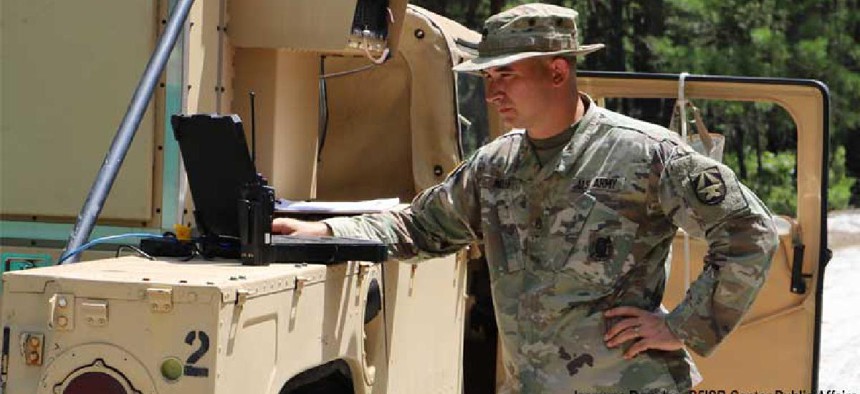JADC2 implementation plan weeks away, DOD says
The Pentagon says it is weeks away from completing its implementation plan to achieve the Defense Department's goal of Joint All Domain Command and Control.
The Pentagon is finalizing its implementation plan for Joint All Domain Command and Control, but defining operational IT needs on the service level is still a challenge.
Brig. Gen. Robert Parker, the deputy director, J6, Joint Staff and chair of the JADC2 Cross Functional Team, said the final draft is undergoing legal review and a classified strategy should be released in the upcoming weeks.
Parker said Sept. 8 during a virtual conference hosted by Defense News, that the strategy would include objectives, task transactions, milestones, service contributions (e.g., the Navy's Project Overmatch, the Air Force's Advanced Battle Management System, and the Army's Project Convergence), plus efforts by combatant commands and other agencies. It is not yet known if an unclassified version will be released publicly.
Parker said the focus for fiscal 2022 will be on developing minimally viable products named in the strategy for JADC2, including the existing Assault Breaker II, which will provide a technical foundation for multi-domain operations, plus capabilities in key focus areas such as DevSecOps, identity credentialing, access management (ICAM), zero trust, transport layer, and cloud.
In the next 90 days, Parker said, the Pentagon will have initial operating capability for its secret and below releasable environment (SABRE) that will support Indo-Pacific Command and Central Command to "allow us to start building out across other combatant commands, while also seeing a closer alignment."
The plan comes as the Army prepares for its second large-scale military technology demonstration, Project Convergence, in November.
Army CIO Raj Iyer said at the same conference that the technologies the service needs already exist but challenges around integration, interoperability and governance persist.
"Joint always seems fun until we get into decision-making around, okay, who owns that, how do we make decisions, how do we govern this?" Iyer said.
"From an IT perspective, it's about who owns the cyberspace -- when it comes to operations, how do we coordinate those activities, both offensive and defensive," Iyer said. "I don't think we will ever get to a single network. I think we can get to a unified network, but there's still got to be...authorizing officials and [someone] who owns cybersecurity risk," which is something that still needs to be worked out."
Iyer said that the Army's Multidomain Task Force was evaluating force structure to best fit these future-focused operations.
"For MDO or JADC2, all of the technologies that we need exist today; that is the easiest part of this. It's how we operationalize that and and how do we achieve consensus in terms of the services and the roles that each of them will play potentially in the future through the Joint Warfighting Concept."
This article first appeared on FCW, a Defense Systems partner site.
NEXT STORY: Progress made in protest for Army's cyber range





